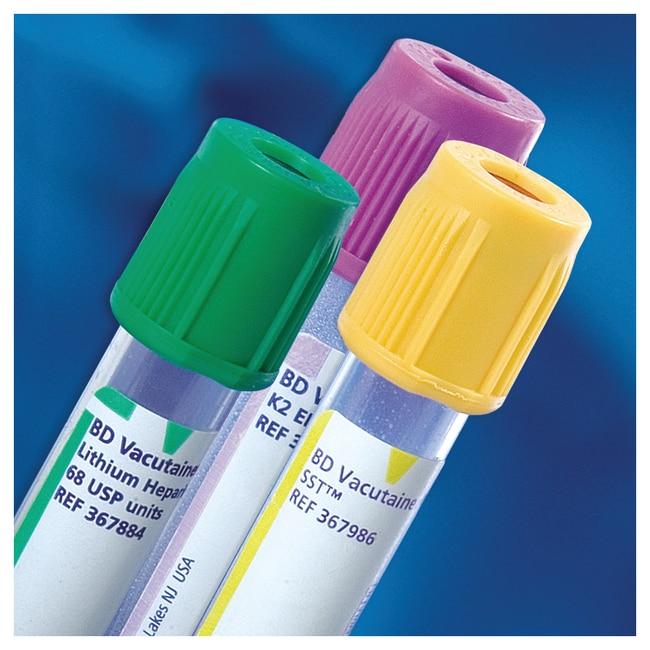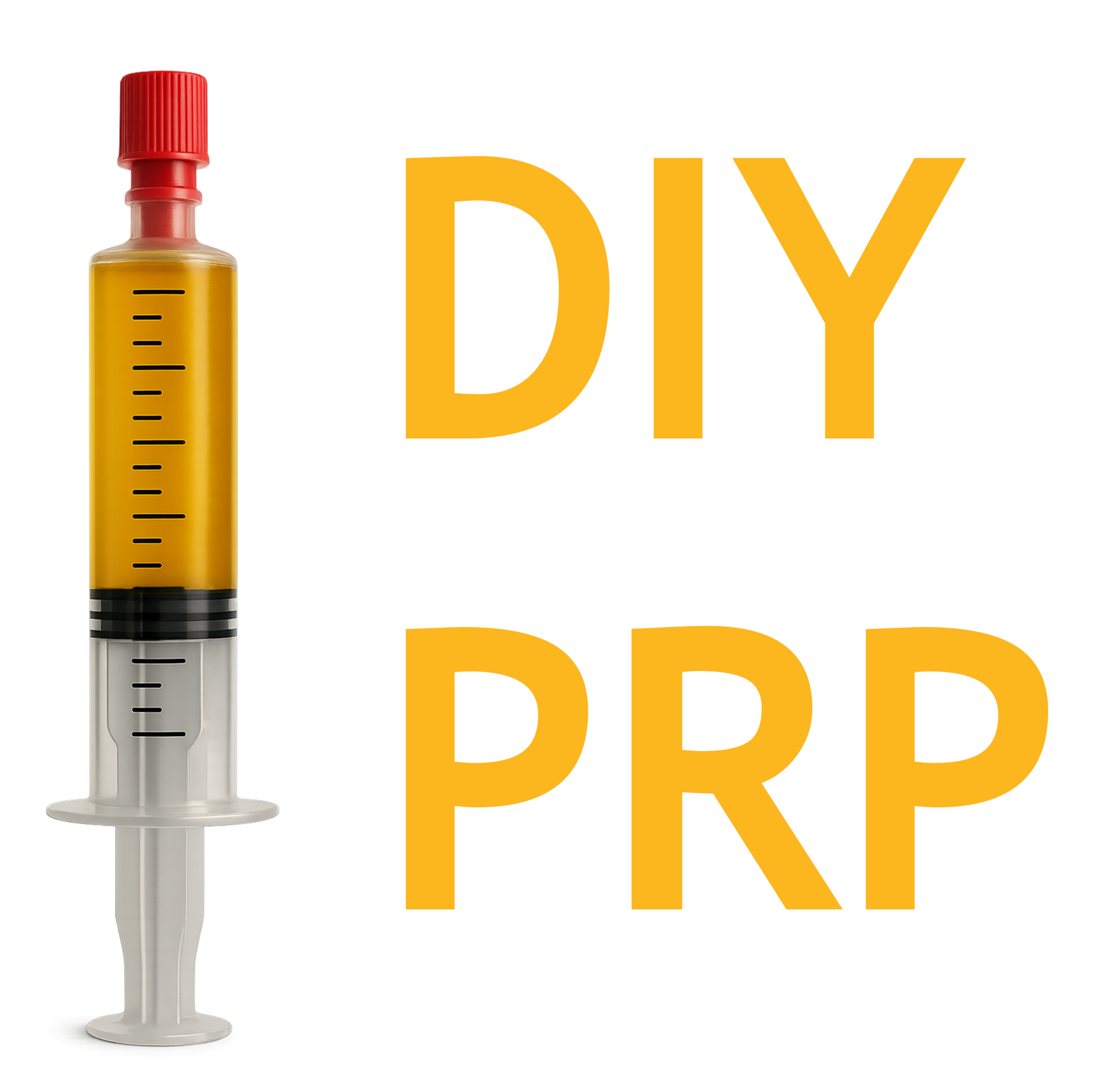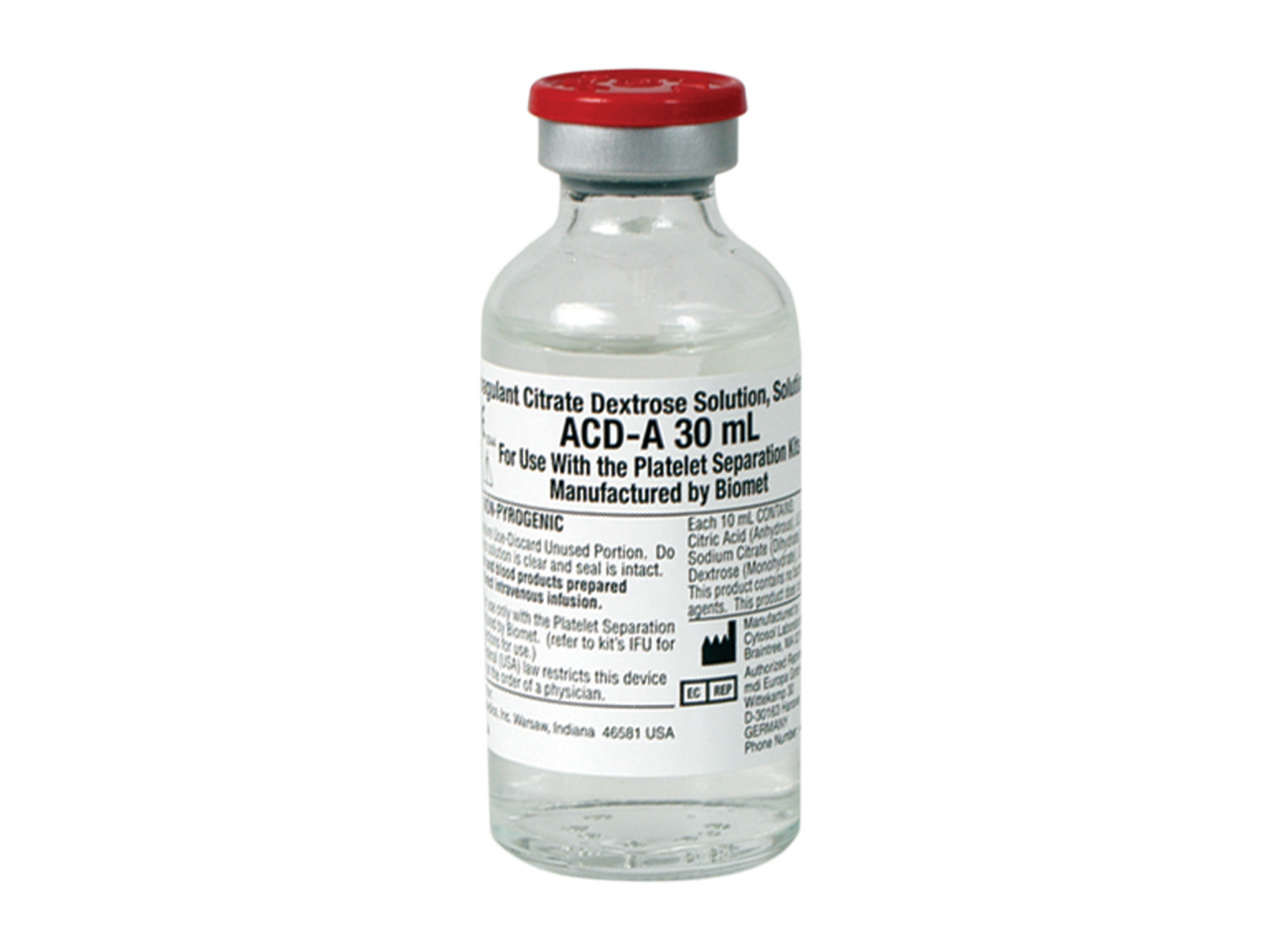Introduction
When preparing platelet-rich plasma (PRP), the choice of anticoagulant is a critical factor influencing platelet yield, viability, and downstream biological activity. Among available options, including sodium citrate, EDTA, and heparin, the use of acid citrate dextrose solution A (ACD-A) has emerged as the most clinically effective and biologically compatible anticoagulant for PRP intended for musculoskeletal applications.
ACD-A’s mild citrate concentration, combined with dextrose and citric acid, helps preserve platelet membrane integrity, minimize spontaneous activation, and optimize growth factor release upon activation. These characteristics make it especially suitable for intra-articular injections using leukocyte-poor PRP (LP-PRP) and muscular lesion treatment with leukocyte-rich PRP (LR-PRP).
Key Consideration:
Anticoagulants suitable for PRP preparation must be minimally harmful to tissues, and any adverse effect must be reversible post-injection. All agents reviewed here are used in clinical settings, but only ACD-A and sodium citrate are reliably biocompatible for reinjectable autologous PRP.
“It is thought that anticoagulants that are suitable for PRP preparation should be minimally harmful against cells or tissues surrounding the implantation sites. In addition, such adverse effects should be reversible, even if occurring after implantation… Thus, it can be assumed that when administered at an appropriate dose, these anticoagulants are safe and they cause no recognizable adverse effects on the surrounding tissues.”
Kakudo et al., BioMed Research International, 2020
1. Comparative Overview: Anticoagulants in PRP Preparation
| Anti-coagulant | Mechanism | Pros | Cons | Recommended For PRP? |
|---|---|---|---|---|
| ACD-A | Calcium chelation + energy | Preserves platelet structure and function | Requires correct dilution ratio | Yes (preferred) |
| Sodium Citrate | Calcium chelation | Widely available, gentle anticoagulant | Less effective over time; lower growth factor yield | Yes (conditional) |
| EDTA | Strong calcium chelation | Very effective anticoagulant | Causes platelet swelling and damage | No |
| Heparin | Antithrombin III activation | Clinically used anticoagulant | May interfere with platelet activation; unpredictable effect | No |
2. Why ACD-A Is Superior
- Preserves Platelet Morphology and Function: Prevents early activation, preserves structure, reduces degranulation.
- Yields Greater Growth Factors: TGF-β1 and PDGF-BB levels are significantly higher compared to sodium citrate.
- Suitable Across PRP Protocols: Ideal for LP-PRP (anti-inflammatory for joints) and LR-PRP (pro-inflammatory for muscles/tendons).
- Clinically Safe: All components are approved for use and cause no irreversible tissue effects when used correctly.
A study by Zhang et al. (2020) found that ACD-A provided superior platelet morphology, lower spontaneous activation, and significantly higher concentrations of TGF-β1 and PDGF-BB when compared to sodium citrate, confirming its advantage in PRP protocols (Zhang et al., 2020).
3. Dissecting ACD-A: How Its Components Support PRP Quality
What is ACD-A?
ACD-A (Acid Citrate Dextrose Solution A) is a sterile, compounded anticoagulant used in blood preservation and PRP preparation. It consists of:
- Citric Acid Monohydrate (C₆H₈O₇·H₂O) – 8.0 g/L
- Sodium Citrate Dihydrate (Na₃C₆H₅O₇·2H₂O) – 22.0 g/L
- Dextrose Monohydrate (C₆H₁₂O₆·H₂O) – 24.5 g/L
The solution is dissolved in sterile water, producing a final pH of approximately 4.5 to 5.5.
Citric Acid + Sodium Citrate: Controlled Chelation
- Chelate calcium gently to prevent clotting without disrupting platelet membranes.
- Maintain platelet quiescence during centrifugation.
- Prevent spontaneous activation while allowing activation at the site of injection.
Dextrose: Metabolic Lifeline
- Provides glycolytic energy for platelets, especially in anaerobic environments.
- Helps sustain mitochondrial function, membrane stability, and growth factor synthesis.
- Critical in avascular tissues like joints and cartilage where oxygen is limited.
Roles of ACD-A Components
| Component | Function | Clinical Relevance |
|---|---|---|
| Citric Acid | pH regulation and calcium chelation | Maintains platelet structure and inhibits coagulation |
| Sodium Citrate | Calcium chelation | Preserves quiescence during PRP processing |
| Dextrose | Energy substrate | Sustains platelet viability in hypoxic tissue (e.g., joints) |
4. Why EDTA and Heparin Are Not Suitable for PRP

EDTA (Ethylenediaminetetraacetic Acid)
- Potent calcium chelator that irreversibly binds Ca²⁺.
- Causes irreversible platelet swelling and activation.
- Disrupts membranes and reduces growth factor release.
- Not biocompatible for intra-articular or muscular injection.
- Conclusion: Safe for lab use only, not for autologous PRP therapy.
Heparin
- Enhances antithrombin III activity to block thrombin and factor Xa.
- May inadvertently activate platelets and interfere with function.
- Residual anticoagulant can alter immune response.
- Does not chelate calcium, which can allow spontaneous activation.
- Conclusion: Sometimes used in research, not ideal for clinical PRP.
5. Conclusion
Although several anticoagulants can technically be used in PRP preparation, ACD-A remains the gold standard due to its balance of anticoagulant action, preservation of platelet function, metabolic support, and safety. It is ideally suited for both LP-PRP in intra-articular injections and LR-PRP in muscle and tendon repair.
For a detailed compounding guide to prepare ACD-A safely for autologous use, refer to: How to Formulate ACD-A for PRP Use
References
- Mishra A et al. “Basic Science and Clinical Use of Platelet Rich Plasma Therapy in Sports Medicine.” PMCID: PMC4909912
- Zhang Y, Song J, Wang X, Jin Y, Xu X. Evaluation of different anticoagulants on the quality and biological potency of platelet-rich plasma. Stem Cell Research & Therapy. 2020;11(1):397. doi:10.1186/s13287-020-01905-1. PMCID: PMC7148468
- Sánchez M et al. “Efficacy of LP-PRP in knee osteoarthritis: A randomized controlled trial.” Nature Scientific Reports, 2021
- Kakudo N et al. “Biocompatibility of anticoagulants used in regenerative medicine.” BioMed Research International, 2020
- Nakamura M, Nakata K, Kawase T. “A Comparative Study of the Effects of Anticoagulants on Pure Platelet-Rich Plasma Quality and Potency.” Biomedicines. 2020;8(3):42. https://doi.org/10.3390/biomedicines8030042
- Zimmer Biomet. “ACD-A Anticoagulant Citrate Dextrose Solution, Solution A.” Product PDF


Leave a Reply